Relief Lightship WAL-505 (1/4)
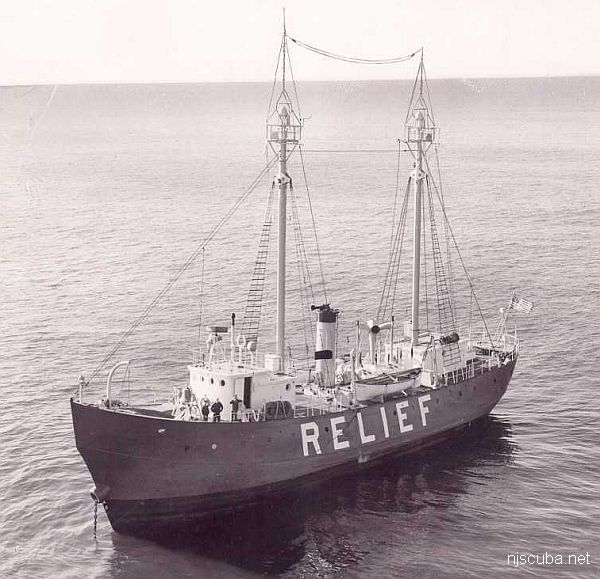
- Type:
- shipwreck, lightship, USCG
- Name:
- Named for its job - as the "relief ship" for the other regular lightships along the eastern seaboard.
- Built:
- 1904, New York Shipbuilding, Camden NJ USA
- Specs:
- ( 129 x 28 ft ) 631 gross tons, 9 crew
- Sunk:
- Friday June 24, 1960
collision with freighter Green Bay - no casualties - GPS:
- 40°27.144' -73°49.070' (AWOIS 2003)
- Depth:
- 105 ft, main deck at 90

The lightship is intact and upright, with the masts knocked down. This wreck is interesting because before you dive it, you can tour her near-identical twin, the Ambrose, at the South Street Seaport. And that's probably not a bad idea - the viz here can be deplorable.
The wreck is heavily overgrown with mussels and other marine life. Large skylights that once illuminated the interior have long since collapsed, and
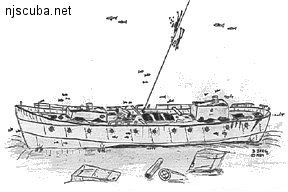
the wreck is easily penetrated through the resulting holes in the deck, although the interior is quite silty. After forty years of being picked over, you would have to be very lucky to find good artifacts anyway. A better place to look inside is the large gash on the starboard side near the "L" in the picture, the result of the collision that sank her. Searching around inside the edges of this hole might even produce a lobster. The bottom is mud and silt - pretty nasty.
The wreck of the pilot boat Sandy Hook is not more than a mile away.
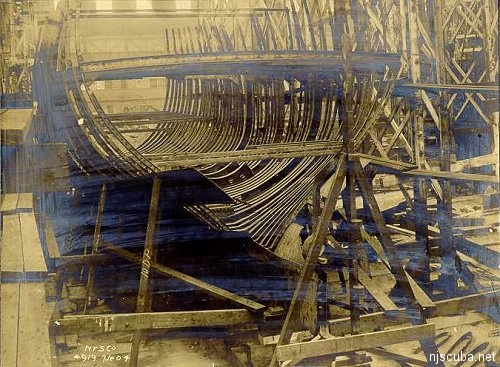
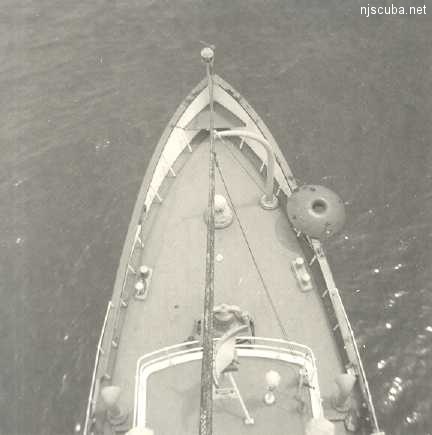
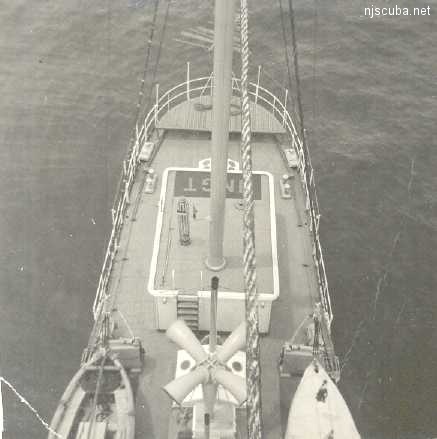
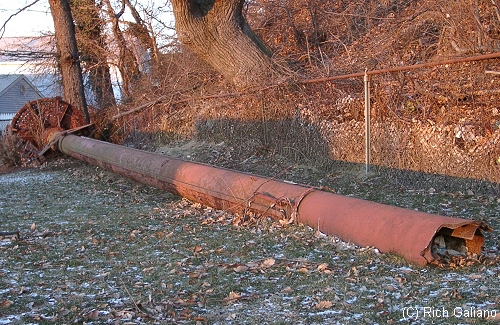

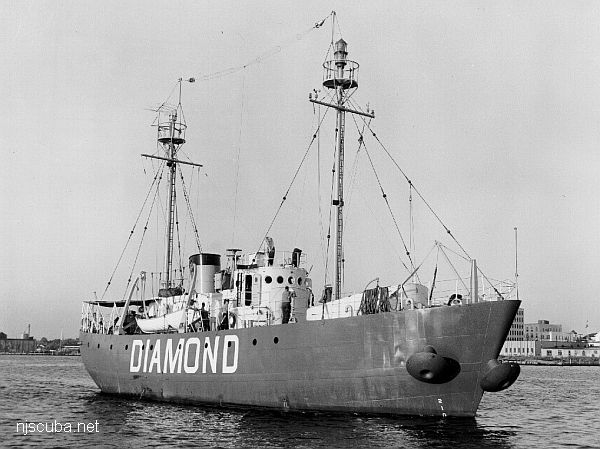
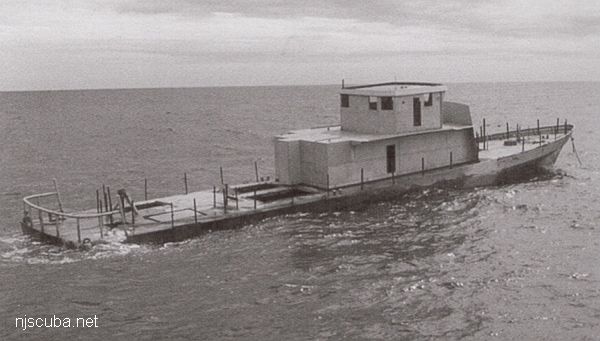
Questions or Inquiries?
Just want to say Hello? Sign the .